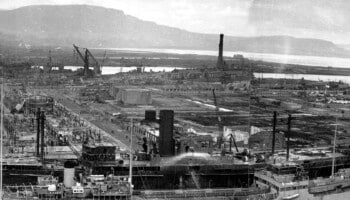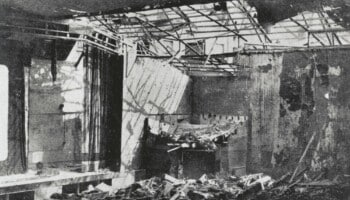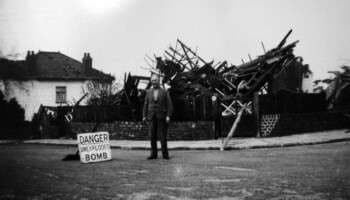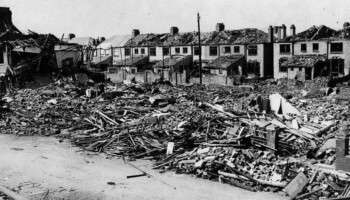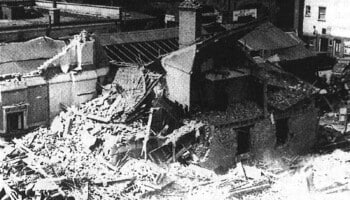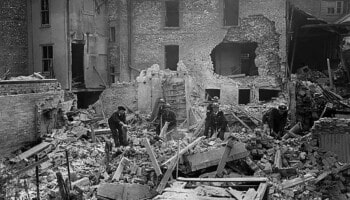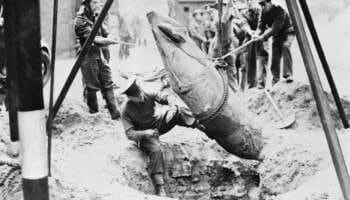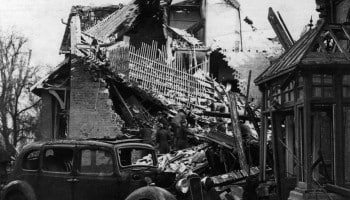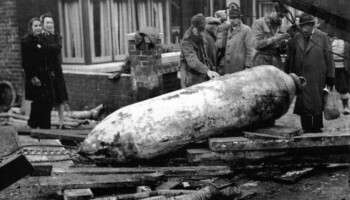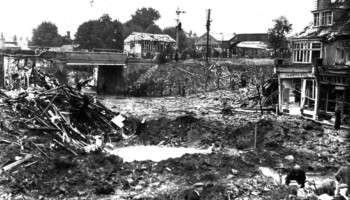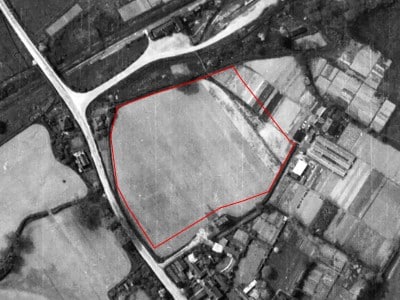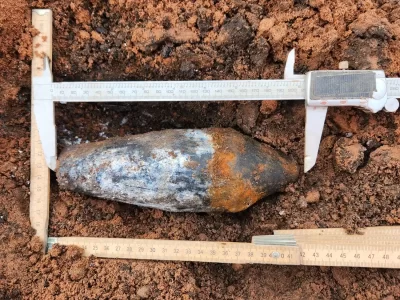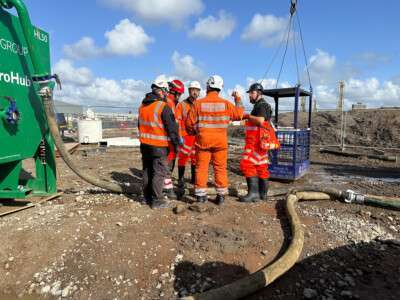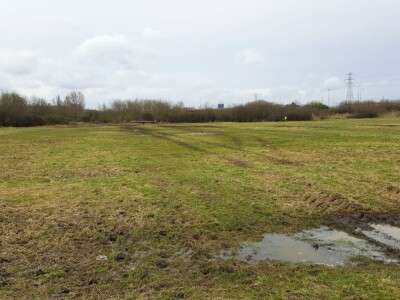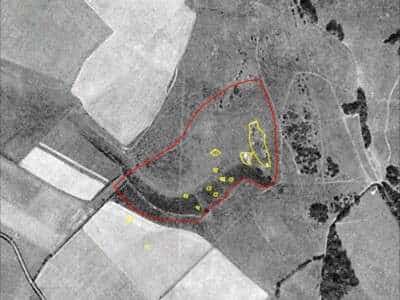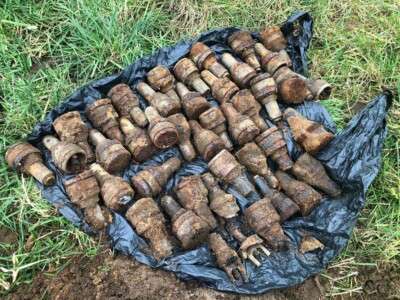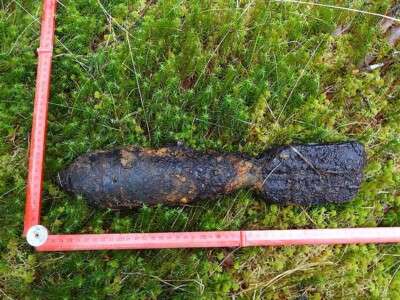What is a Preliminary UXO Risk Assessment?
Our Preliminary UXO Risk Assessment is the first stage in our UXO risk mitigation strategy. It provides an essential screening check that highlights whether further investigation is required in the form of a Detailed UXO Risk Assessment.
Usually undertaken at the very start of a project and prior to intrusive ground works, our bespoke and non-automated 3-4 page desktop reports will highlight the basic risk factors on your project.
Our reports utilise extensive historical digital archives, library resources, maps and internet sources as well as unique UXO geo-databases – which include datasets that are not available in the public domain.
How much does a Preliminary UXO Risk Assessment cost?
A Preliminary UXO Risk Assessment report costs only £150, and is produced by our dedicated in-house Research Team. They are usually completed within 24 hours of your order. If you need a quicker answer, contact our team, and we will be able to do some immediate background research. We can provide discounts for multiple/bulk orders.
Useful tip: If a Detailed UXO Risk Assessment is recommended, please be aware that the cost of the Preliminary UXO Risk Assessment will be deducted from the overall cost.
Why choose a Preliminary UXO Risk Assessment from 1st Line Defence?
Our Preliminary UXO Risk Assessments are bespoke and non-automated, tailored entirely to your site and scope of works. 1st Line Defence have the largest and most experienced UXO Research Department in the UK, meaning quick turnaround times and accurate and useful information (meet our Research Team here!).
Our goal is to produce reasonable, common-sense outcomes for our preliminary reports, and to provide as much value and detail as we can within the time frames available to us.
From 2012 to 2023, 1st Line Defence produced over 6,500 Preliminary UXO Risk Assessments.
In 2023, 51% of all Preliminary UXO Risk Assessments resulted in ‘no further action’ being recommended. For those which followed on to a Detailed UXO Risk Assessment, a further 49% were assessed as ‘Low’ or ‘Low-Medium’ risk – and no proactive on-site support was necessary.
How does 1st Line Defence produce Preliminary UXO Risk Assessments?
Each preliminary reports make use of any data that is readily available to us online or offline, and considers factors such as historic land use, site location history, recorded bomb damage, frequency of access and the proposed scope of works.
The reports follow CIRIA C681 guidelines (Unexploded ordnance (UXO) A guide for the construction industry), a publication that provides the industry with a set and defined process for the management of risks associated with UXO from WWI and WWII aerial bombardment (read more about CIRIA C681).
If we find something of interest (possible evidence of bombing / damage, historic military use of the site etc.), or if we find that we do not have enough information to fully assess the UXO risk, and we are aware that additional data is available that would allow the risk level to be fully qualified – we will recommend that more research is carried out by producing a Detailed UXO Risk Assessment.
This does not necessarily mean that your project is at risk, but rather we cannot make a full assessment with the current information available, and we will explain why we recommend that more research is undertaken.
If no potential UXO risk or cause for concern is identified on your project, you can have peace of mind that we will not suggest unnecessary UXO risk mitigation measures.
UXO City Guides
The risk of encountering UXO as a result of WWII is not limited solely to London. Through a series of UXO City Guides, we explore the potential of UXO contamination at different locations across the UK.
“Really impressed with the quality of service that 1st Line Defence offer. We set a bit of a challenge by asking for 24 Preliminary UXO Risk Assessments within the space of 2 weeks which 1st Line have risen to and have allowed us to remain on schedule with our site works. Very happy!“
Geo-Environmental Engineer, M-EC
Explore our Case Studies
Frequently Asked Questions
Browse the most commonly asked Preliminary UXO Risk Assessment questions or contact us if you have a specific enquiry
The majority of UXO encountered in the UK is not actually of German origin. During WWII, over 4,000,000 hectares of UK land were in use with British and Allied armed forces. The Construction Industry Research and Information Association (CIRIA) estimates that approximately 20% of the UK's land mass has seen some form of military activity at some stage. As of 2017, the MOD’s training estate covered around 364,000 hectares. For these reasons, the only way to be sure of identifying all UXO risks on your site is to carry out a UXO Risk Assessment.
The majority of UXO encountered in the UK is not actually of German origin. During WWII, over 4,000,000 hectares of UK land were in use with British and Allied armed forces. The Construction Industry Research and Information Association (CIRIA) estimates that approximately 20% of the UK's land mass has seen some form of military activity at some stage. As of 2017, the MOD’s training estate covered around 364,000 hectares. For these reasons, the only way to be sure of identifying all UXO risks on your site is to carry out a UXO Risk Assessment.
It cannot be ruled out completely as your site could still have been bombed from opportunistic ‘tip and run’ raids that were common during WWII. Bombing overspill from raids on other major targets nearby may have also affected your site, and we would always recommend to get a UXO Risk Assessment first.
It cannot be ruled out completely as your site could still have been bombed from opportunistic ‘tip and run’ raids that were common during WWII. Bombing overspill from raids on other major targets nearby may have also affected your site, and we would always recommend to get a UXO Risk Assessment first.
Unfortunately not. They are often incomplete and should be used in conjunction with other records wherever possible. For example combining information from WWII-era aerial photography, bomb census mapping and written bomb incident records would give a more accurate indication of where a bomb fell than one of these sources alone. It is imperative that historical research for UXO Risk Assessments is thorough and that all available resources are utilised.
Unfortunately not. They are often incomplete and should be used in conjunction with other records wherever possible. For example combining information from WWII-era aerial photography, bomb census mapping and written bomb incident records would give a more accurate indication of where a bomb fell than one of these sources alone. It is imperative that historical research for UXO Risk Assessments is thorough and that all available resources are utilised.
You may be putting people at risk. Although UXO risk in the UK is generally considered ‘low probability’, it is ‘high consequence’. Health and safety legislation requires you to consider foreseeable risks such as this. Even the unexpected discovery of an item of UXO can incur expensive downtime, delays and cost overruns. Being aware of the potential risk of UXO on your site is essential. You do not have to conduct a comprehensive UXO Survey for every site, but the risk of UXO should be considered and a Preliminary or Detailed UXO Risk Assessment undertaken.
You may be putting people at risk. Although UXO risk in the UK is generally considered ‘low probability’, it is ‘high consequence’. Health and safety legislation requires you to consider foreseeable risks such as this. Even the unexpected discovery of an item of UXO can incur expensive downtime, delays and cost overruns. Being aware of the potential risk of UXO on your site is essential. You do not have to conduct a comprehensive UXO Survey for every site, but the risk of UXO should be considered and a Preliminary or Detailed UXO Risk Assessment undertaken.
The type of information we use can depend on factors such as where the site is located – but for a Detailed Risk Assessment, as a minimum we would use the following where available:
- Previous military use, location history and land use.
- Reports and records of air-delivered bombs (WWI & WWII).
- Frequency of access, damage, ground cover.
- Consideration of any mitigating factors.
- Extent and nature of proposed intrusive works.
- Local and national archives.
- Historical and bomb census and damage mapping.
- High-resolution WWII-era aerial photography.
- Written ARP bomb incident reports.
- Luftwaffe target information.
The type of information we use can depend on factors such as where the site is located – but for a Detailed Risk Assessment, as a minimum we would use the following where available:
- Previous military use, location history and land use.
- Reports and records of air-delivered bombs (WWI & WWII).
- Frequency of access, damage, ground cover.
- Consideration of any mitigating factors.
- Extent and nature of proposed intrusive works.
- Local and national archives.
- Historical and bomb census and damage mapping.
- High-resolution WWII-era aerial photography.
- Written ARP bomb incident reports.
- Luftwaffe target information.
If a Preliminary UXO Risk Assessment has identified a potential UXO risk on your site, we would recommend that a Detailed UXO Risk Assessment is commissioned – which is an in-depth desktop study which fully investigates the risk of UXO being present. If the Detailed UXO Risk Assessment has identified a threat from UXO and it has been classified as medium or high, we would recommend a risk mitigation plan is created and implemented to reduce the risk to as low as reasonably practicable (ALARP).
If a Preliminary UXO Risk Assessment has identified a potential UXO risk on your site, we would recommend that a Detailed UXO Risk Assessment is commissioned – which is an in-depth desktop study which fully investigates the risk of UXO being present. If the Detailed UXO Risk Assessment has identified a threat from UXO and it has been classified as medium or high, we would recommend a risk mitigation plan is created and implemented to reduce the risk to as low as reasonably practicable (ALARP).
No, the Preliminary UXO Risk Assessment is a ‘desktop’ study. We utilise ‘in-house’ information from our extensive digital archives, library, geo-databases, as well as online resources to undertake the preliminary research on your site – so a site visit is generally not necessary.
Hundreds of thousands of bombs were dropped all over the UK during WWI and WWII – with around 10% failing to explode. Therefore, even if UXO risk might not seem likely, it is still best practice to carry out a Preliminary UXO Risk Assessment.
A Preliminary UXO Risk Assessment is an initial screening check to determine whether there was any history of bombing or military activity on your site. The report will confirm whether further investigation is required or no further research is necessary.
Usually, the main pieces of information we require is:
- Full address and postcode.
- A map / plan of the site with the boundary that needs to be investigated clearly highlighted, preferably using a ‘red line’ for the boundary.
- Details about any proposed intrusive ground works – boreholes, trial pits, piling, strip foundations etc.
- Site specific geotechnical information / borehole logs – if available.
To place an order for a Preliminary UXO Risk Assessment contact us on +44 (0) 1992 245020 or info@1stlinedefence.co.uk or use our contact form to register your interest and a member of the team will get in touch.
A Preliminary UXO Risk Assessment will usually be completed within 1 or 2 working days but can be done sooner if required.
A Preliminary UXO Risk Assessment usually costs £150 but costs can vary for larger and more complex sites. If you are looking to place an order for multiple sites at the same time, contact us because 1st Line Defence can offer a special discount for bulk orders. If you receive a more competitive quote, let us know and we will try our best to match or beat it.
Looking to order a Preliminary UXO Risk Assessment?
Contact us for more information or if you have any questions before placing your order, we are here to help.
